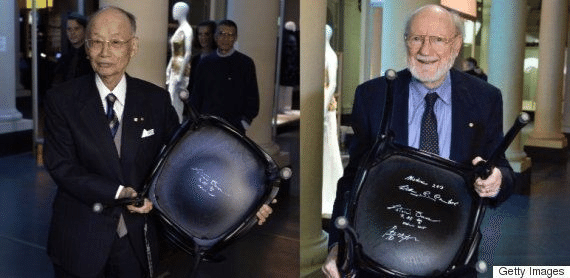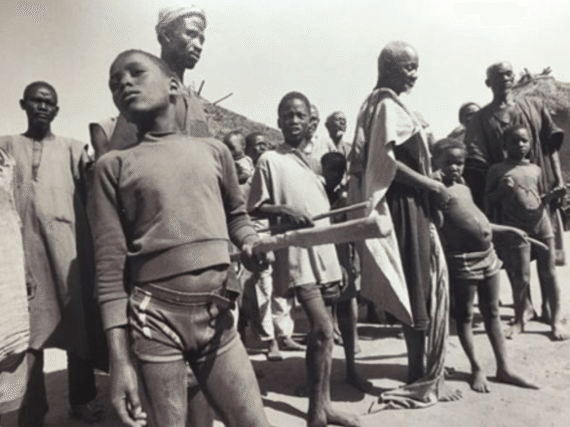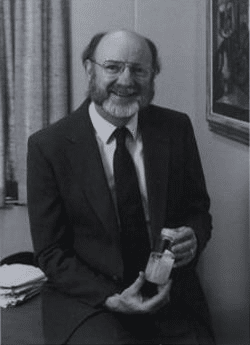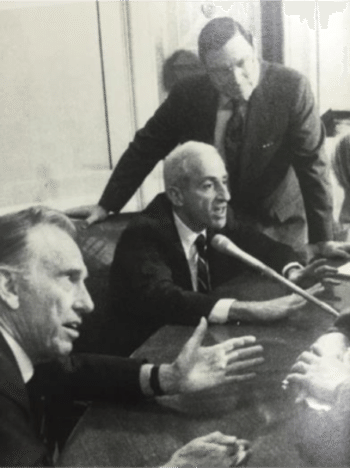The Huffington Post---Dr. Satoshi Omura, Dr. William Campbell, Courage and Decisions of Pharmaceutical Companies- "Drugs to Save 300 Million People" was born from here
Discovered a cure that would lead to the development of "a drug that saves 300 million people from the fear of infectious diseases every year."
The news of Satoshi Omura, a special honorary professor at Kitasato University, who won the 2015 Nobel Prize in Physiology or Medicine delighted all over Japan. Behind the birth of this drug, Dr. William C. Campbell, who co-winned the Nobel Prize with Dr. Omura, and decided to "distribute" a new drug born from their research results without profitability. There was a passion and a sense of mission to "save patients around the world" hidden in the pharmaceutical companies Merck & Co., Inc., Kenilworth, NJ, USA (MSD outside the United States and Canada, hereinafter MSD).
The drug is still delivered to about 300 million people annually, the New York Times praising it as "one of the greatest medical successes of the 20th century," and the World Bank "in the history of supporting developing countries." One of the most notable achievements in Japan. "

Dr. Satoshi Omura (left) and Dr. William Campbell (right)
■ "Only one of 100,000 species of bacteria" is from the soil of a Japanese golf course
In Africa and Latin America, many people have been plagued by a parasite-induced infection called river blindness (onchocerciasis), which causes itching of the skin throughout the body and deprives the eyesight. According to the World Health Organization (WHO), 85 million people were at risk of infection in 35 developing countries in the 1970s. Eighteen million people are harboring parasites, one million suffer from visual impairment, and 300,000 are completely blind. And more than one-third of the patients were shortening their lifespan.

In 1978, Campbell, who was engaged in research to control livestock parasites at MSD's laboratory in New Jersey, USA, was working on the development of a therapeutic drug later known as "ivermectin."
Campbell's research team continued to collect bacteria from around the world looking for parasite-fighting ones. There were nearly 100,000 species, but only one was found to be effective. It was collected by Dr. Omura near the golf course in Ito in 1974. Dr. Omura focused on the color and properties of the culture medium of the bacterium, and sent a sample to MSD, saying, "This bacterium looks interesting."

Dr. Campbell holding a bottle of onchocerca volvulus, the source of onchocerciasis
The effect was amazing. When the infected mice were fed with food containing bacteria collected by Dr. Omura, the parasites disappeared from the mice with only a small amount of ingestion.
"I can't forget the excitement at that time, not only because it killed the parasites, but because it didn't hurt the mice at all," Campbell recalls.
■ An unusual corporate decision "for people at risk of life"
Campbell wondered if the drug would work against human parasites.
Campbell has offered to develop the drug for humans to senior vice president Roy Valleros, the director of the institute. However, research takes several years, and research funding alone can be as large as millions of dollars. He also needs clinical trials in Africa, and he frankly said that most patients don't have the money to buy drugs.

Roy Valgeros Senior Vice President (at that time)
Valeros was caught in a board. If he accepts Campbell's offer, he will invest in a drug of no commercial value. On the other hand, if rejected, it will not be possible to send out medicines that will save people around the world who are at risk of life.
Valleros sent a letter to Campbell. "Continue your research. Gather as much data as possible for development as a drug." This letter ignited Campbell's mission to save patients.
Dr. Omura's steady research combined with MSD's passion for researching drugs that save people has paved the way for ivermectin development.
In 1979, Campbell was convinced that he had the scientific basis needed to develop it as a drug, and he went to the MSD committee to make the drug development decision. New drug development often fails even for free. Even if successful, it would be tremendously costly to manufacture a drug over time and distribute it to patients living in some of the most remote areas in the world.
Since the expected patient population is those who have difficulty buying new drugs, it has been found that it is impossible to recover development and manufacturing costs, let alone profits. Valgeros, who chaired the committee, also understood that he could not continue his research given the management of the company.
But Valeros reverted to MSD's principle that "medicines are for people, not for profit." He wonders if he is closing the possibility of overcoming the illnesses that plague many in remote parts of the world.
"I was so fascinated by the mission they were trying to accomplish, so I couldn't wait to start clinical trials," Valeros said. Campbell has embarked on development as a drug for humans.
Clinical trials of the new drug were conducted in Senegal, Africa, under the direction of MSD's Mohammed A. Aziz. A few weeks after the administration of trace amounts of the drug, most parasites were eliminated from the patient's body. There were few cases of worsening of symptoms, and even a small dose drastically reduced the number of parasites in a few months.

Mohamed A. Aziz Clinical Research Supervisor (right)
However, experts raised questions such as "I think the subjects were only mild patients" and "If the administration is continued, toxicity should be confirmed." Since 1983, Aziz has conducted additional tests on 1,200 people in four countries, including Ghana and Liberia, and once a year proved that one tablet of the drug can eliminate most of the parasites.
■ To provide unprecedented free of charge "There are times in life when you have to make a decision."
After confirming the efficacy and safety of ivermectin in humans, Valgeros, who had become CEO in 1987, named the drug "Mectizan ®" and applied for marketing approval as a treatment for onchocerciasis.
However, even if it is approved, it is unlikely to supply it to the market at a cost of more than tens of millions of dollars a year. Introduced by former Secretary of State Henry Kissinger, who was an advisor to MSD, Valeros visited government agencies and private foundations on international development, European governments, and African countries in search of sponsorship, but cooperated from everywhere. Was not obtained. Some inside the company said that providing new drugs free of charge was "not something that a for-profit company would do." However, like Aziz et al., There was an opinion that "even if the company bears the cost, it should be provided free of charge." That is the mission of the pharmaceutical company-Aziz believed so and did not doubt.
"There are times in life where you have to take leadership and make decisions," Valeros decided to offer an unprecedented free offer.

Valgeros (center) preaching "a special situation where only those who cannot afford the drug need it" at a press conference in 1987.
However, it is difficult to provide it free of charge. In countries where onchocerciasis is widespread, there are few pharmacies and few public health professionals. The journey to the village in the area where the patient is located takes hours and the roads are not well maintained. Moreover, there is no point in simply going to the village where the patient is and handing out the medicine. In order to reach everyone in the village, it is necessary to patiently follow the actions of the villagers and get all the medicines taken. MSD has set up a Mectizan® Expert Committee of public health experts to select government and private sector agencies responsible for drug distribution in each country, centered on WHO, and to compile medical records.
As steady dissemination activities continued, the effects of the new drug spread to African countries. In 1989, when Campbell visited a village in northern Togo, Campbell was told by the village mayor: "Great! No one will die anymore."
"As a researcher, it was an unforgettable moment," Campbell later recalled.
■ "Pharmaceuticals are not for profit. They are for people."
On the other hand, the economic cost was enormous. To control parasites with Mectizan®, it should be taken annually for up to 14 years. As of 1997, MSD spent more than hundreds of millions of dollars on providing Mectizan® for free. However, Valeros believed and did not doubt. "If you do the right thing, you will get unexpected benefits later."
The best scientists, including Dr. Satoshi Omura and Dr. William Campbell, gathered on the development of Mectizan®. And above all, the morale and pride of MSD employees, including Valeros, increased. The company's profits may have been lost. However, there is no doubt that more benefits have been obtained. The result was the result of receiving the Nobel Prize from Dr. Omura and Dr. Campbell.
"Pharmaceuticals are not for profit. They are for people." George W. Merck, the founding president of MSD, said: MSD's corporate culture, which emphasized patient health over profits and was described as "full of idealistic momentum," made Valeros' courageous decision and gave birth to two Nobel laureates. is.
この記事が気に入ったらサポートをしてみませんか?
